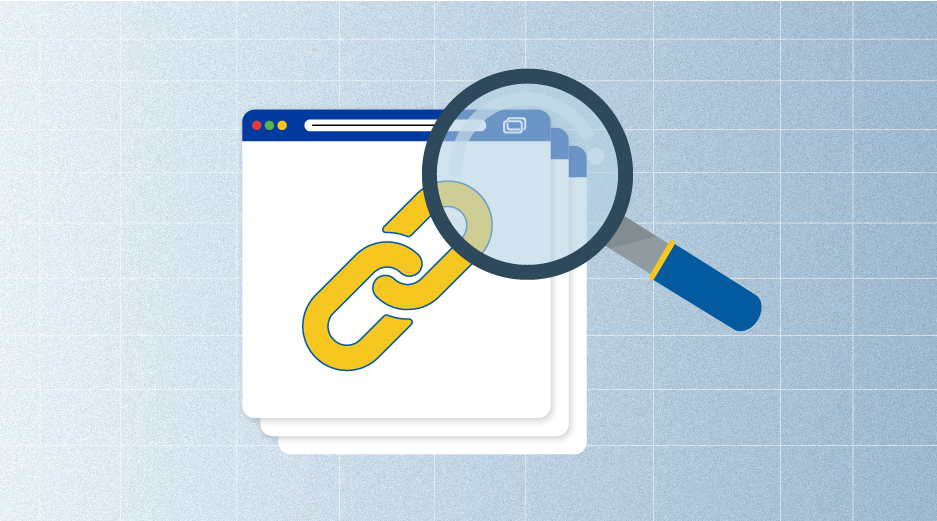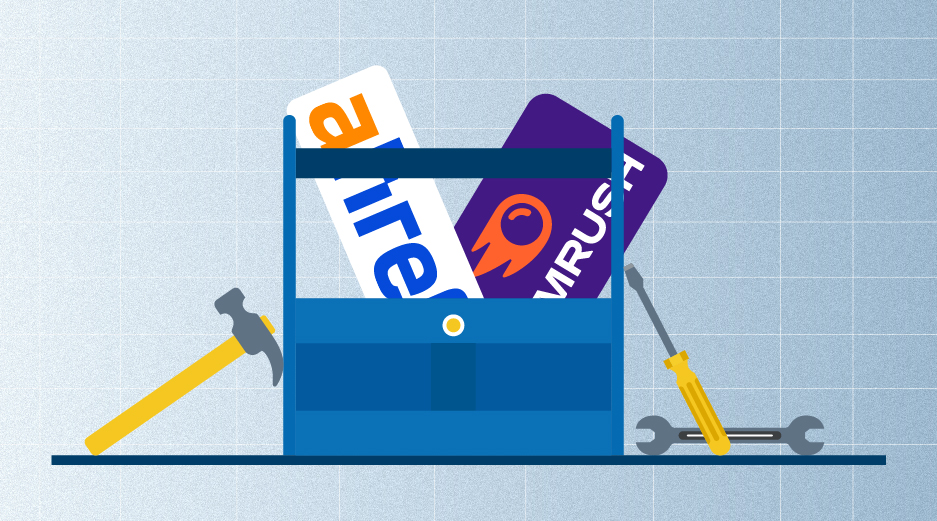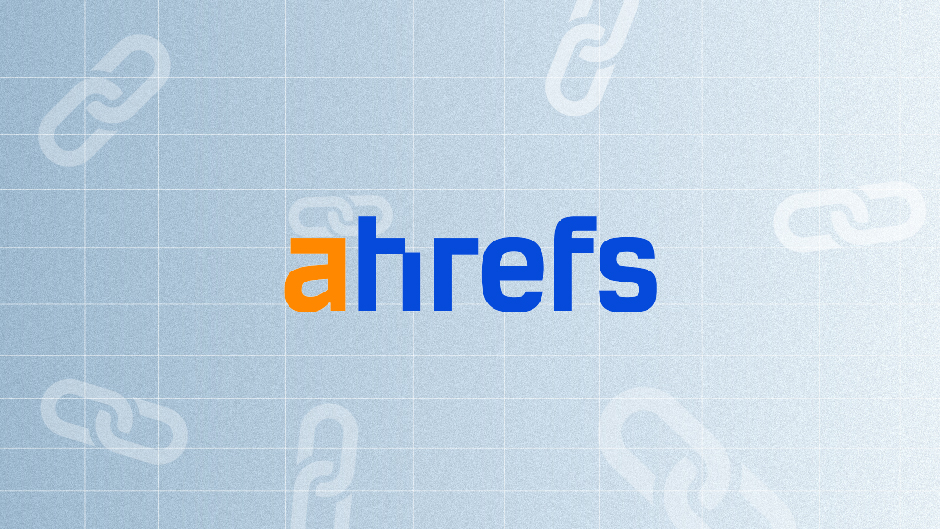Most websites have no clear idea whether their backlinks are helping or hurting them. Ignoring toxic links or failing to learn their impact can negatively affect rankings and traffic.
That’s why regular backlink monitoring isn’t optional; it’s a must. By tracking all the backlinks pointing to your site, you can spot problems early, clean up harmful backlinks, and improve your overall SEO.
In this guide, you’ll see why tracking backlinks matters, plus how to check your website’s backlinks with the best backlink checker tools available.
Let’s get started!
Key Reasons to Check Backlinks Regularly
As a SaaS link building agency, backlink monitoring is a major part of our SEO processes, and we recommend it for any site that wants to grow steadily.
Here are the main reasons we closely review backlinks:
- To verify if a specific site has linked to us: The best backlink checker tools confirm whether we have a live link from a certain site.
- To make sure backlinks are dofollow: Dofollow links have more SEO value than nofollow ones. Since we only build dofollow links, we often check to ensure they are still dofollow.
- To find and fix broken backlinks: A link might lead to a page that’s been deleted or moved, showing a 404 error. Backlink checkers help us find and restore them.
- To identify backlinks from spammy sources: Occasionally, shady sites (like PBNs) might link to your content. These links can hurt your SEO, so we review and remove them.
Pro Tip: We suggest checking your backlink profile at least once a month. If this feels tricky, let our SEO audit services do the work.
Now that we know how important it is to check backlinks, let’s explore our top favorite backlink monitoring tools!
Best Backlink Checker Tools Reviewed
There are many backlink tracking tools out there. At our SaaS link building agency, we have a clear favorite. (Don’t worry, we know favoritism isn’t a good thing, unless we’re talking about the best backlink checker tools 🙂
We promise to share a few other options you might want to explore, too.
Let’s begin!
Our Top Pick: Ahrefs
Ahrefs is our main tool for the backlink monitoring process.
Here’s how to use it step-by-step:
Step 1: Go to Ahrefs.com and open “Site Explorer”: Type in the domain you want to check (e.g., saynine.ai).
Step 2: Review the “Backlink Profile” section: Click on “Backlinks” to see all the links, as well as the referring domains linking to your site.
Step 3: Choose how to view your links: You can look at “All” backlinks or select “One link per domain” to get a cleaner view. It helps you see how many different websites are linking to you, rather than seeing the same domain repeated over and over.
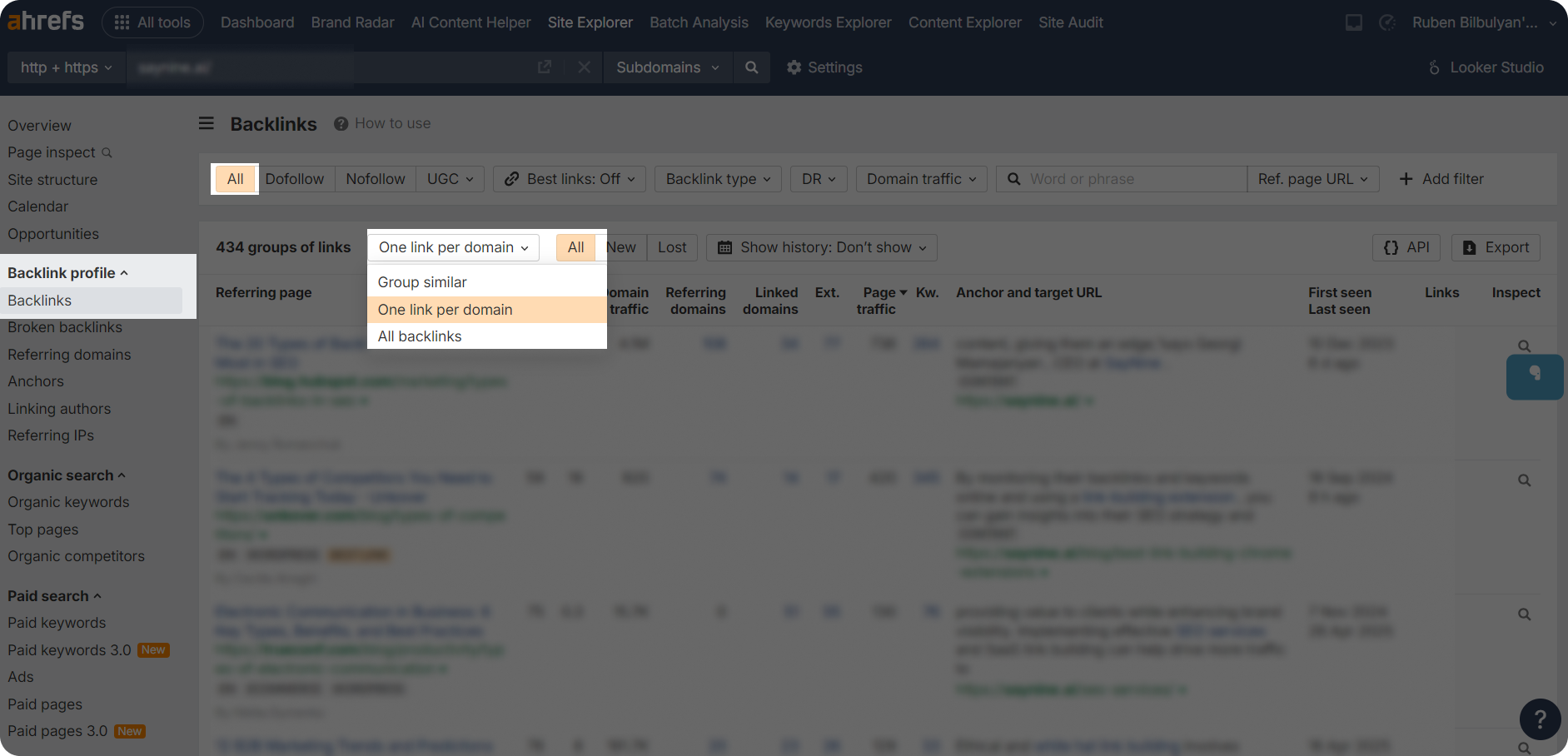
Step 4: Use filters: Obviously, the “New” filter shows your latest backlinks. You can adjust the time frame to see what has come in recently: last month, last 7 days, or even the last 24 hours.
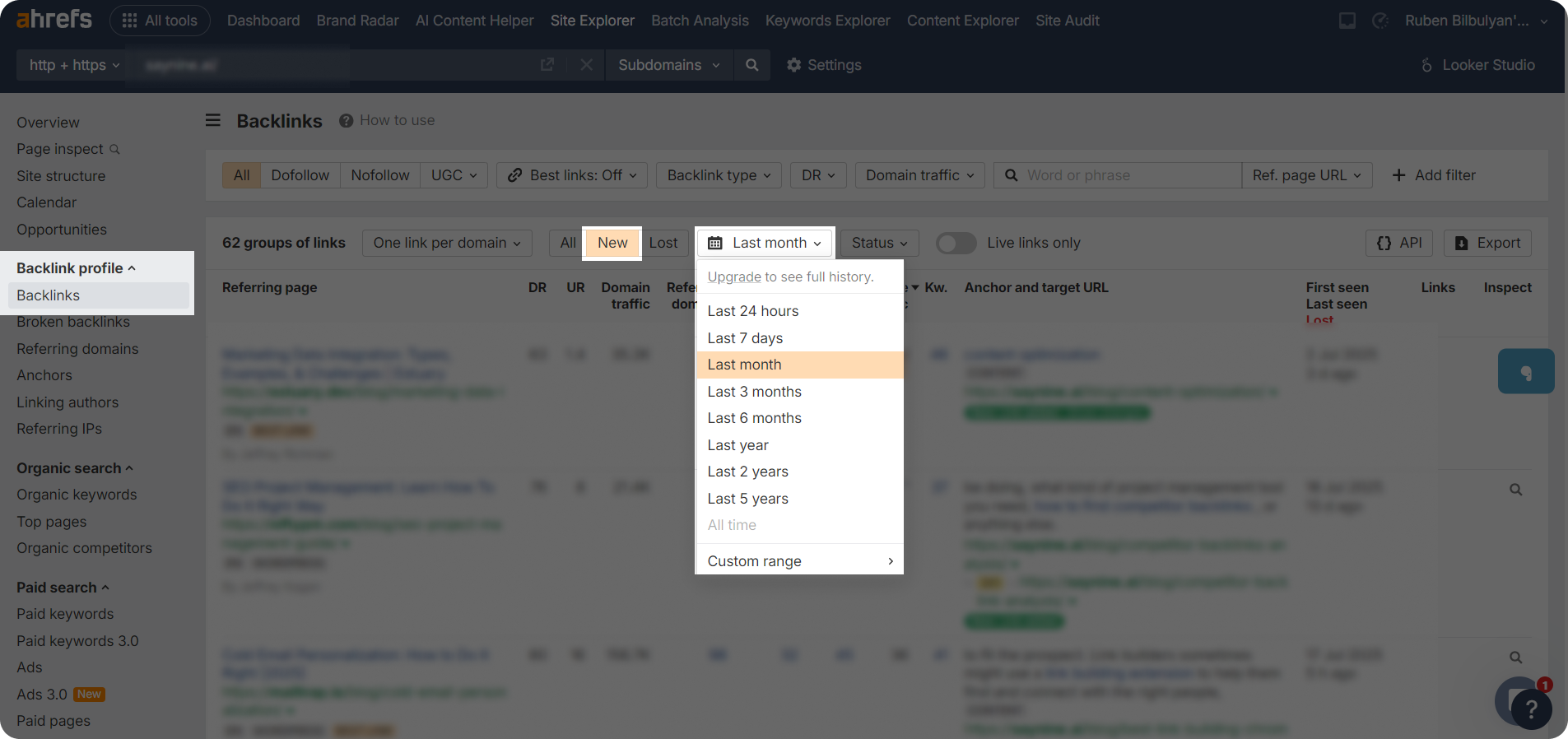
Step 5: Check the “Lost” backlinks section: This shows any backlinks that have disappeared and may need to be restored through link reclamation.
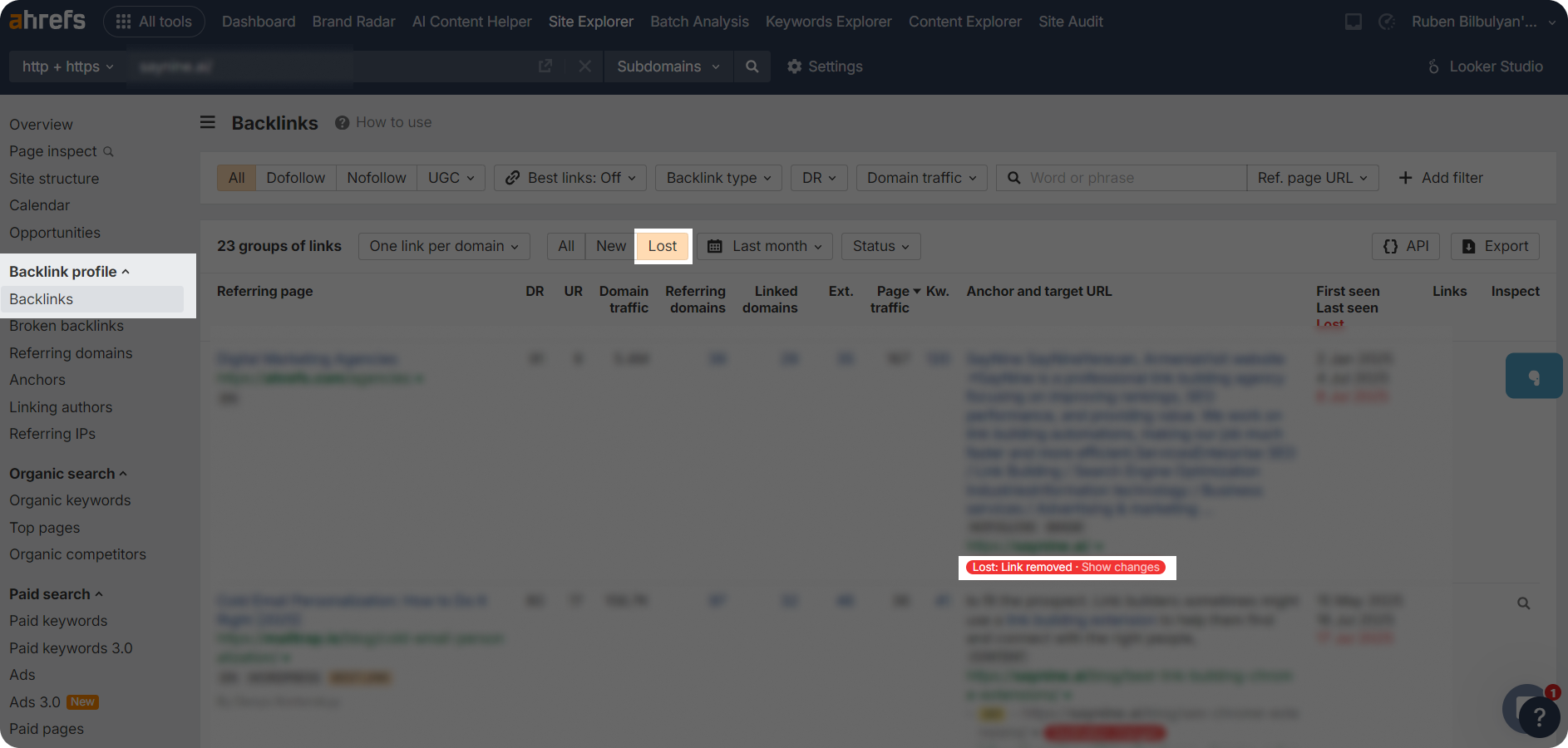
What you should do with lost backlinks:
- If the link was earned naturally (like from a blog post on a popular site), there’s not much you can do if it gets removed.
- If it were part of a link exchange, our team always contacts the partner. We ask them to restore the backlink. Or if we can’t get in touch, we provide a compensation link to our client.
Step 6: Check the “Broken Backlinks” section: As mentioned before, these are links that point to a page that no longer works (often a 404 error).

You can see in the screenshot that we currently don’t have any broken backlinks, but if you do, here’s what we recommend:
- Check to see whether the problem is on your side (like a broken URL). If it is so, then try fixing it yourself.
- If the issue is the partner’s site, reach out and ask them to update or move the link.
Step 7: Check the “Dofollow” and “Nofollow” sections. I already mentioned that dofollow links have more SEO value than the nofollow backlinks. So we always opt for dofollow.
If we find a nofollow link, we contact the site and ask them to change it back to dofollow.

As you can see, Ahrefs has everything you need to keep a healthy backlink profile.
Now, let’s move on to exploring a few other backlink checker tools worth considering!
SEMrush
SEMrush is also one of the best backlink checker tools.
It offers all the key features you need. Actually, it’s very similar to Ahrefs but has a different dashboard and interface.
Here’s how to use Semrush to check backlinks:
Step 1: Go to Semrush.com
Step 2: Find the “Backlink Analytics” section.
Step 3: Enter the domain you want to analyze.
Step 4: Select the “Backlinks” and review the following:
- All backlinks
- Active backlinks (links currently live)
- New backlinks
- Lost backlinks
- Follow links (same as dofollow)
- Nofollow links

That’s all it takes to get a clear view of your backlink profile and find any issues.
On to the next backlink tracking tool!
Moz
Just like the others, Moz is a solid alternative for checking backlinks.
But what makes it stand out is one unique feature: the free Domain Authority (DA) checker.
It’s useful because it shows the website’s Spam Score.
How to use Moz’s DA checker:
Step 1: Go to Moz.com
Step 2: Check the “Free SEO Tools”
Step 3: Select “Domain Analysis” and enter your domain to run the report
Step 4: Review the “Spam Score” in the results
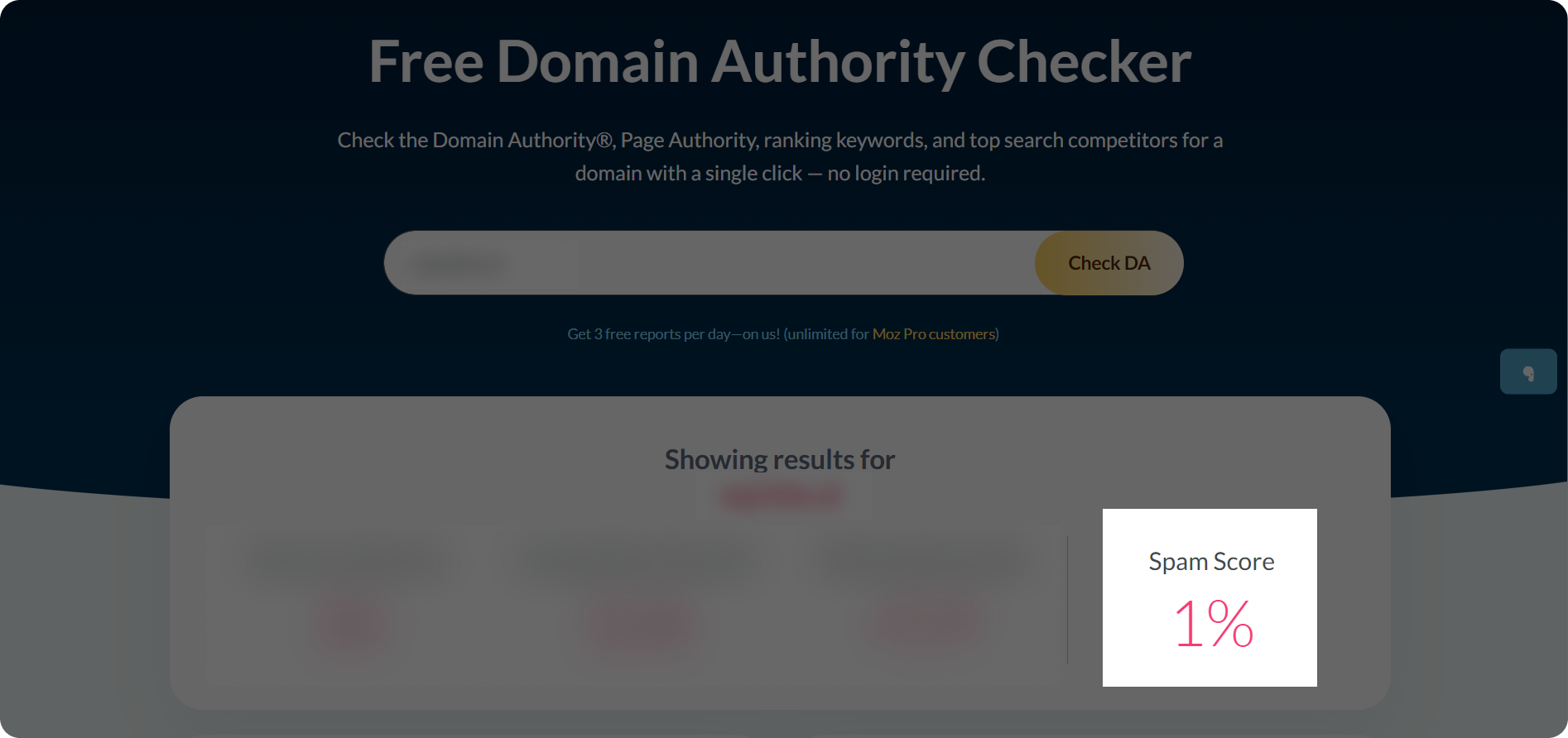
As you can see, our Spam Score is just 1%, which is great.
Ideally, your score should stay between 1-3% for healthy backlink performance. A higher score means your site has backlinks from bad sources, which can hurt your SEO.
A quick disclaimer: A high spam score doesn’t automatically mean a site is spammy. Moreover, your own spam score won’t automatically go up just because a referring domain has a high score. Always consider the full picture, and don’t ignore relevant domains only because of their spam score.
On to the last one!
Majestic
And finally, the last backlink checker tool we recommend is Majestic.
Like the others, Majestic offers all the important features you need, though you’ll need a subscription to access its full range of tools.
What sets Majestic apart are its unique metrics called “Trust Flow” and “Citation Flow”. These help you understand the quality and influence of your backlinks.
How to check these metrics:
Step 1: Go to Majestic.com
Step 2: Enter the domain you want to analyze
Step 3: In the “Summary” section, review:
- Trust Flow – This measures how trustworthy and reliable the sites linking to you are. High Trust Flow means your backlinks come from more reputable domains.
- Citation Flow – This shows how impactful your backlinks are based on quantity, regardless of quality.

Together, these metrics help you get a better picture of your backlink profile’s strength and quality.
Further reading:
How to Build a Strong Backlink Profile
And that’s a wrap on the best backlink checker tools!
Conclusion
As you’ve learned, having a clean backlink profile is a big part of improving your site’s visibility and traffic.
Regular audits help you recover lost links, fix broken ones, and confirm your backlinks are supporting your SEO goals.
If you ever need help with backlink monitoring, our SEO specialists are here to review your backlinks, handle any issues, and help boost your search rankings.
FAQ about the best backlink checker tools
Which is the best tool to check backlinks?
Ahrefs is one of the best tools to check backlinks. It offers detailed insights into lost, broken, dofollow, and nofollow links, helping you monitor and manage your backlink profile effectively.
How to get credible backlinks?
Good backlinks come from trusted, relevant websites. You can get them through publishing compelling content, guest posting, or link building.
How many high-quality backlinks do I need?
There’s no exact number. It depends on your content, site performance, brand reputation, and competition. Generally, we recommend starting with at least 10 backlinks to see positive results.
